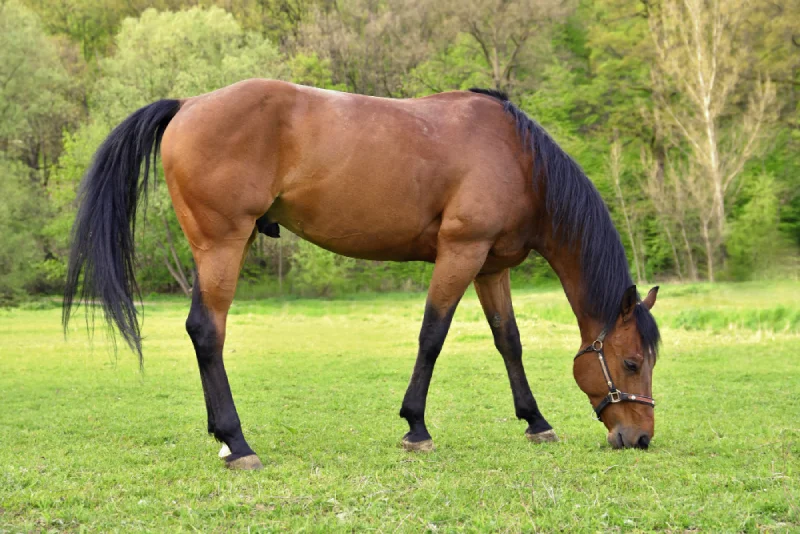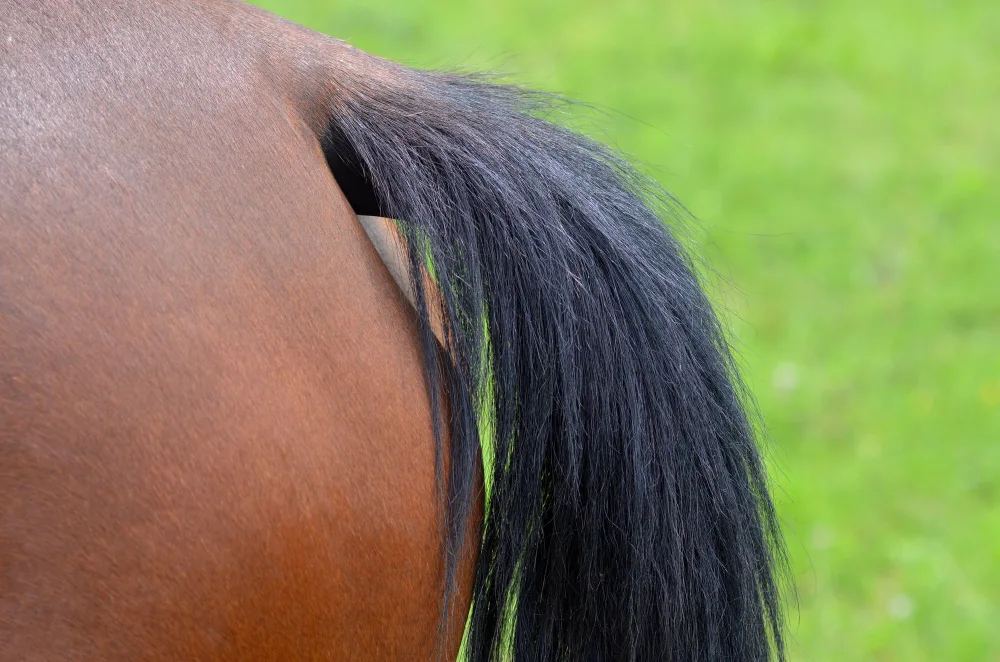A horse’s tail is a distinctive and significant physical trait with numerous purposes. It is mostly made of muscle, skin, and hair, which combine to form a strong and adaptable appendage.
The muscles that move the horse’s tail are found in the hindquarters, and they are attached to the tail bones by strong tendons. These muscles enable the horse to move its tail in a number of directions, including swishing, raising, and tucking. In particular when the horse is moving, the ability to move the tail in these various directions is crucial for preserving balance and stability. The tail really serves as a natural rudder, assisting the horse in turning and other actions.
The horse’s tail has rather thick skin that is covered in sweat glands that control the body temperature of the animal. The supracaudal glands, a collection of specialized glands, are located at the base of the tail. These glands secrete a waxy material that aids in shielding and maintaining the cleanliness of the tail hairs. Moreover, the skin of the tail is very sensitive, able to pick up even the smallest variations in temperature and pressure.
The tail hairs are exceptionally robust and resilient, built to withstand the rigors of outdoor living. The same substance that makes up human hair and nails, keratin, is used to create each hair. In fact, some scientists think that horses’ tails operate as a kind of natural barometer, allowing them to anticipate changes in the weather.
Depending on the breed and individual horse, the length and thickness of the tail can differ significantly. While some horses’ tails are long and elegant and sweep the ground, others have shorter tails that are more useful. Horse breeders and enthusiasts frequently pay special attention to a horse’s tail as a sign of the health and wellbeing of the animal. While a weak or sparse tail may be a clue of an underlying health problem, a broad, full tail is frequently a sign of a healthy horse.
Helping the horse maintain balance while it is sprinting, jumping, or engaging in other athletic activities is one of the tail’s most important roles. The horse’s motions are counterbalanced by the tail, which aids in keeping the animal steady and under control. The horse’s tail serves as a form of communication in addition to serving as a means of balance. A horse’s tail may be raised high in the air to show its emotional state when it is elated or terrified. A horse that is at ease, on the other hand, might hold its tail in a relaxed, low attitude.

Sweeping away flies and other insects is another essential job of the horse’s tail. The horse’s long, flowing hairs assist keep it cool and comfortable during the summer by offering exceptional defense against pesky insects. Some horses will even use their tails to fend off intruders like other horses or animals.
In conclusion, the horse’s tail is an amazing physical characteristic that is crucial to the animal’s comfort, communication, and balance. Muscle, skin, and hair combine in perfect harmony with other parts to form a strong and adaptable appendage. The tail’s long, flowing hair and exquisite movements make it not only useful but also wonderfully attractive. A horse’s tail is a monument to the incredible beauty and usefulness of these wonderful creatures, whether it is long and opulent or short and useful.


